|
I'm slowly going through papers and other fibrous things that pass through my life. I record what is going into the paper mash. Sometime the day's paper is made from papers I've kept -just in case- and it's a day when I'm ready to let go of them. Sometimes I include materials that have arrived only today, transient. This page is made of old receipts, failed prints (blocked magenta jets in the printer), the packaging for notecards by @angielewin. I love the echo of goldens and oranges. I threw in a corn husk from yesterday's dinner too. End-of-summer encapsulated, dry and dusty and parched.
My thanks to @theartscouncilofIreland for supporting me in this journey.
1 Comment
I'm stitching patches into my father's batik shirt that my husband now wears. My father would have been thrilled!
The fabric has become so delicate that it feels like moleskin. I choose another Indonesian cloth for the patches. These are offcuts from a skirt that was bought at the same shop called Ibu Bintang Negara. Located down a track in old Jakarta, the smell of wax and dyes would meet you before the colours and patterns. My father spoke bahasa, the main Indonesian language, and he would translate for my sister and me. "These are the pattern blocks that they use," he explained, pointing to a library of intricately carved wooden blocks that were dark and slightly sticky with years of immersion into melted wax. "This form symbolises the orchid, this the garuda." I think of the warmth of where this shirt was made. Each crease, as witnessed by the dyeing process, tells of the person who placed the wax and crumpled the cloth into hot dye; who rinsed it and laid it out to dry on the bristly lawn; the person who cut the cloth and stitched it and ironed it, the conversation between my father and this family of batik workers, all under the flickering fluorescent lights and slow-turning fans of Ibu Bintang Negara. As I stitch, the cloth thickens like a scar. I am no match for the Negaras. Along the edges of my patches, new holes appear with the transfer of tension and I go back to my jar of cloth scraps. I'm not annoyed. It means I can spend more time holding, remembering, fixing. I got a small thermal printer that allows me to print out on thermal paper. I love this as thermal paper fades with time and heat so it means that the image will have a limited life span - like us! So we should enjoy it while it is there.
I was also given a perspex block which was just the right length for me to take photos through it with my phone's camera. Starting off with a print of one of my photos, I took a picture of the photo through the block to produce a second photo, which I then photographed through the block etc. Over a number of iterations, the starting photograph recedes and what surfaces are the effects of lighting, imperfections on the block, the texture of the print paper, the particularities of the printer. The sense of scale shifts as the photographs start moving towards being an image that is either cosmic or microscopic. Perhaps I'm just a little envious of my friends and relations in North America who have had the chance to experience a total eclipse today. I made this painting after witnessing an eclipse on a long Normandy beach in 1999. There was such a sense of anticipation that day! People clutched their French state eclipse glasses and champagne flutes while chattering amiably to their sandy-toed neighbours that they had never previously met. Together we willed every cloud away and jumped occasionally in the salty air to keep warm until a silencing of birds and breeze announced that the show was about to begin. The shadow started down to the south of us, running up the beach with a speed you don't normally associate with such size. When it reached us, there was a collective intake of breath, as if we had all expected to be hit by something physical. We were immersed. We whispered and wondered, feeling no bigger than the grains that stuck to our feet. The sun slipped away, was gone, and then it crept back, ray by ray until we weren't sure if we had simply imagined it all. A shrill chirp broke the spell. Dusk, night, dawn had swept over us like a wave. My neighbour shook the last of her champagne into my glass and gathered her picnic affairs. "Que c'était beau!" she exclaimed as she placed her hand lightly on my elbow. Then she was gone and with her, the brief community that had formed during the passing of a shadow. #eclipse #kimlingmorris
I have loved modern ballet ever since seeing my mother's cousin, Michael Ho, dance with Ballet Rambert. The music was offset, spiky, rhythmic, arrhythmic and with it, the dancers' bodies contorted, froze, lilted and expanded in ways I found mesmerising. In these two pieces. I have looked at ways of testing the materials, working the 'background' to show another layer, finding areas of near-repetition and areas of fold that traverse the rules of representation that I set myself when making my other pieces. 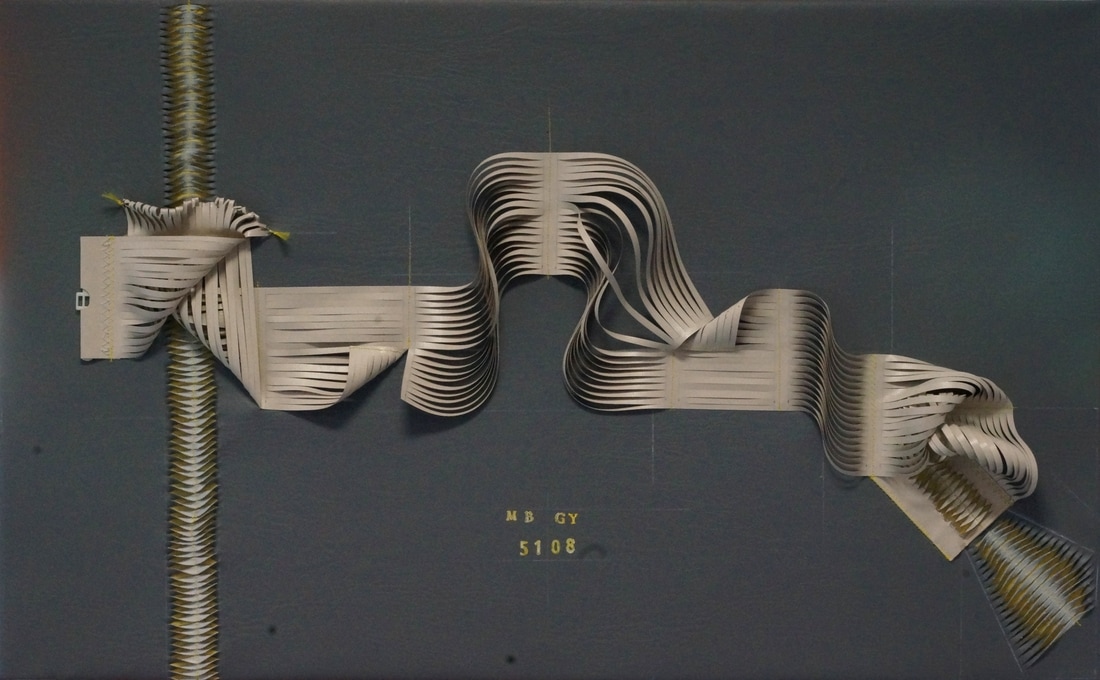 MB GY (Modern Ballet Grey Yellow) explores the concept of beautiful contortion, pushing at the boundaries of the dancer’s body and its surroundings. MB GY (Modern Ballet Grey Yellow) explores the concept of beautiful contortion, pushing at the boundaries of the dancer’s body and its surroundings. This paired work is based on the Waltz. Through it are the 1-2-3 steps of the classic dance form, colours from an 18th century Viennese ballroom and the drift of the Danube in the background What I design on paper doesn't always come out exactly as I think it will so I double check it before committing it to stitch. This is a photo of my preparation work in Sample studios. Once I have slashed the blind, I'll pin it up to be sure that the formation works. Here, I have placed the two pieces in their proposed proximity so I can decide how I want the audio tape to be positioned around the blinds. For this paired work, I want to have a communication between the two pieces via the audio tape so that there is a sense of flow in the dance, as if waltzing from one guingette to the next along the banks of the Danube.
Using a basic flamenco rhythm, I imagine the dancer in her tiered dress and every emphasis in the beat is an excuse to strike a pose. One, two, THREE - she throws open her fan over her head- four, five, SIX - she dramatically flicks her skirts forward with her hand - seven EIGHT - she stamps her heel- nine TEN - she stamps again with more insistence- eleven, TWELVE - she turns away with an impatient flounce.
I have cut the blind in 12 equal sections, placing a flourish where there is an emphasis on a beat. A great link for understanding and hearing the rhythm is on this link Compás Flamenco Twiddle twiddle twiddle. It did need something and yesterday it occurred to me what that was. So here is the revised scarabocchio Gloria et Honore for tonight's "Forward Looking, Looking Back Now" exhibition at TACTIC, curated by Alison Fogarty..I had a preview and I really love what will be in it. Work from the two residency award artists Efgeniya Martirosyan and Sophie Gough and a fab installation from Killian O'Dwyer... excitiiiiinngg!
This is going to be a busy week. My little Scarabocchi are going out into the big world to grace the walls of the city's exhibition spaces. First up is Wednesday's opening of the Cork Textiles Network exhibition REMIX where my pieces "Side A" and "Side B" will be shown alongside a range of pieces whose techniques and styles are as diverse as the people who make up our membership. I'd really like to thank the CTN team who have worked so hard to keep this voluntary organisation going. I have learnt an inordinate amount of skills and tips from the other members and everyone constantly strives to bring the whole level up while encouraging new practitioners in their first hesitant stitches. On Thursday is the opening of Tactic's final public exhibition in our current space, Forward Looking, Looking Back Now. I will be showing "Gloria et Honore". Then at the start of December, I will have "Shwang!" at the Affordable Art Christmas Art Exhibition at the CIT Wandesford Quay Gallery. Exciting times!
Messing around with sections of vertical blinds that were left in the building that our studios are housed in, I started with shapes that are really boat like. The resilience of the plastic naturally rounds the form. When I tried stitching the end margin down onto the cut strips instead of onto each other, I got a shape almost like a cusped tooth. By superimposing these forms, you can look down into them to get a sort of moiré pattern
|
Authorcreating tales of things and other places Archives
October 2022
Categories
All
|
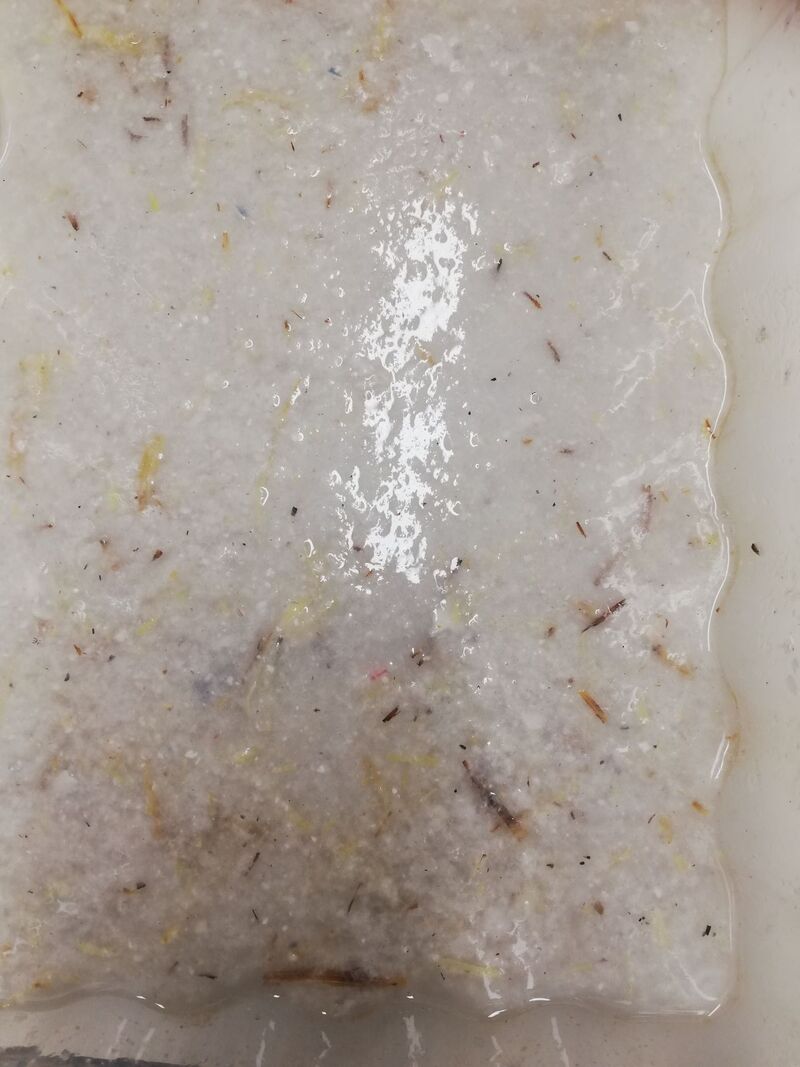
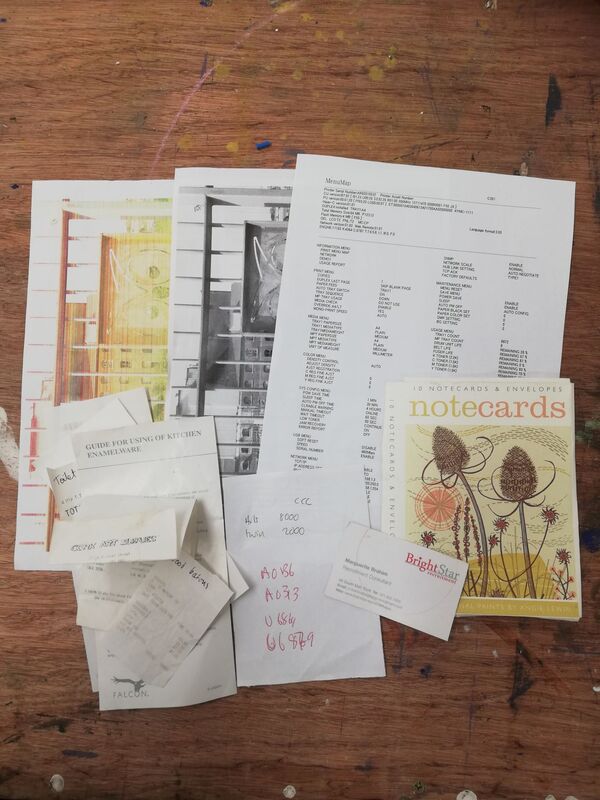
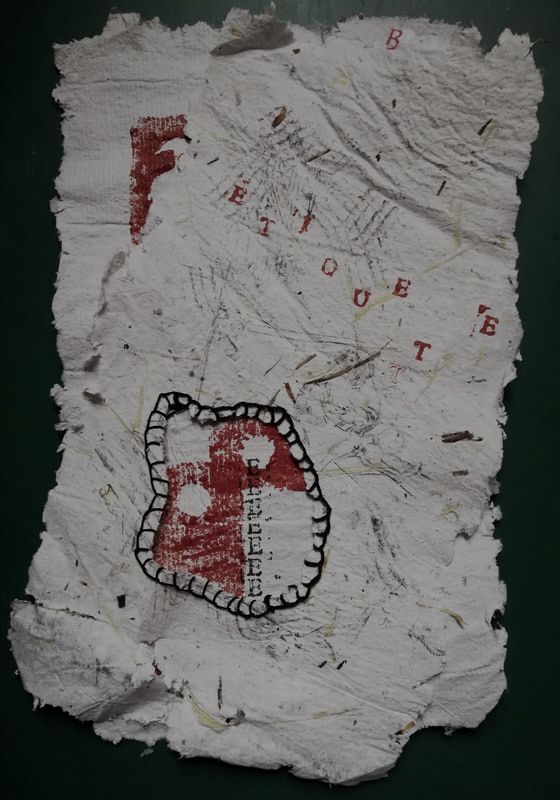
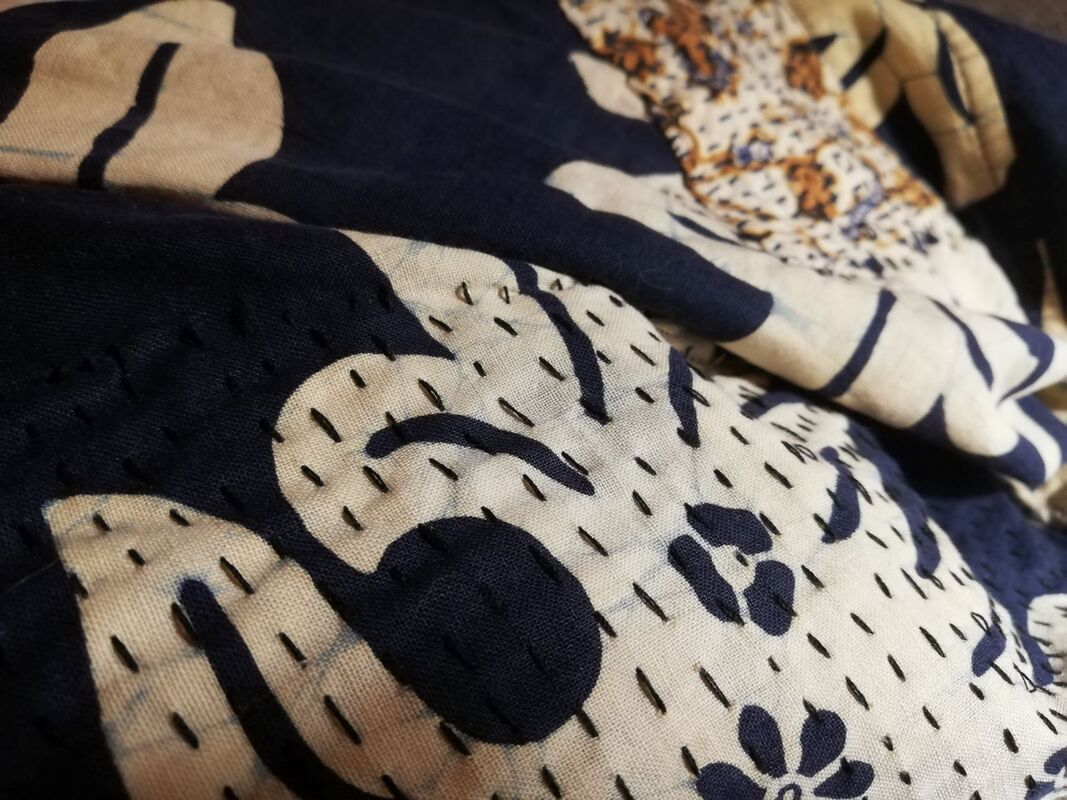
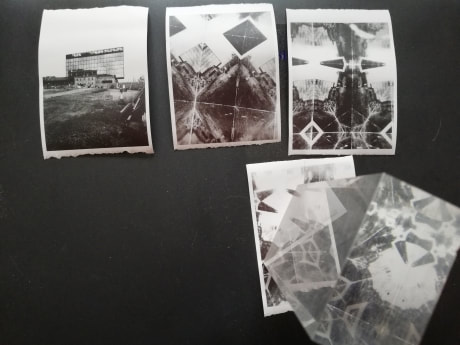
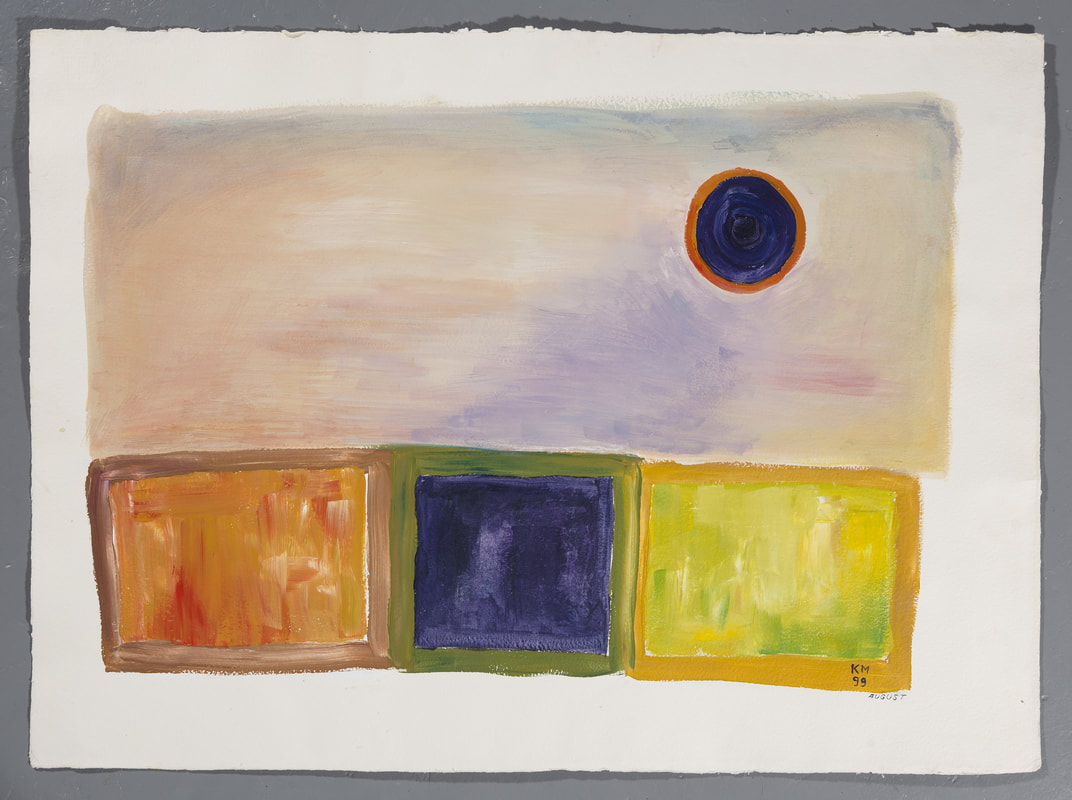
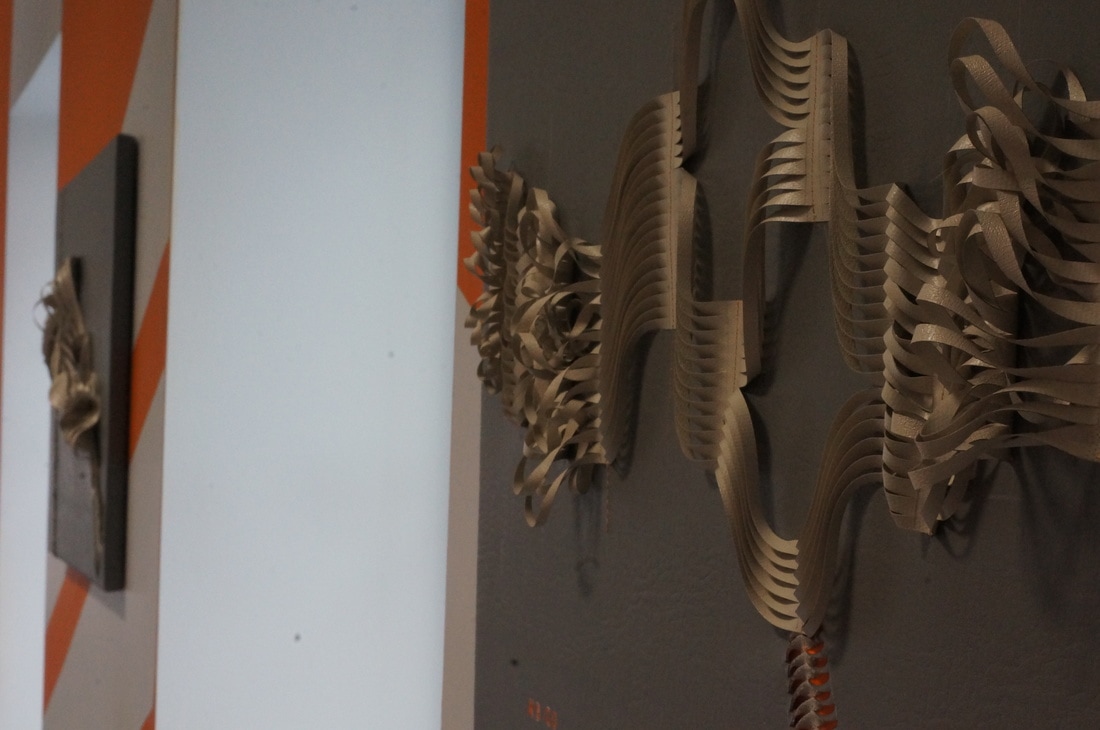
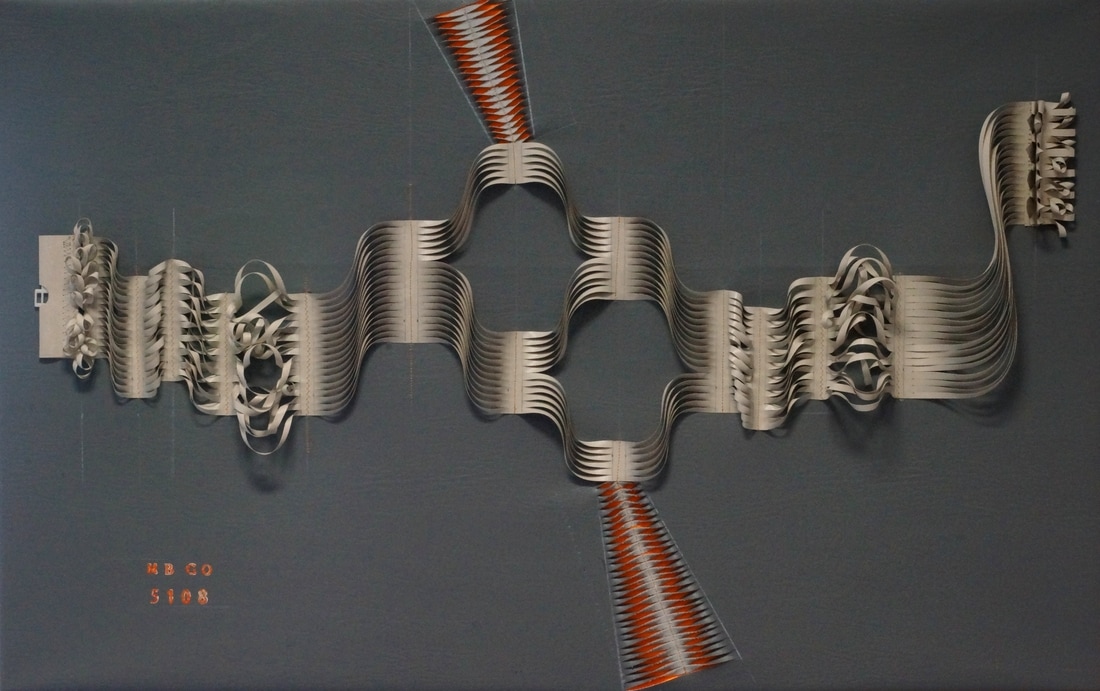
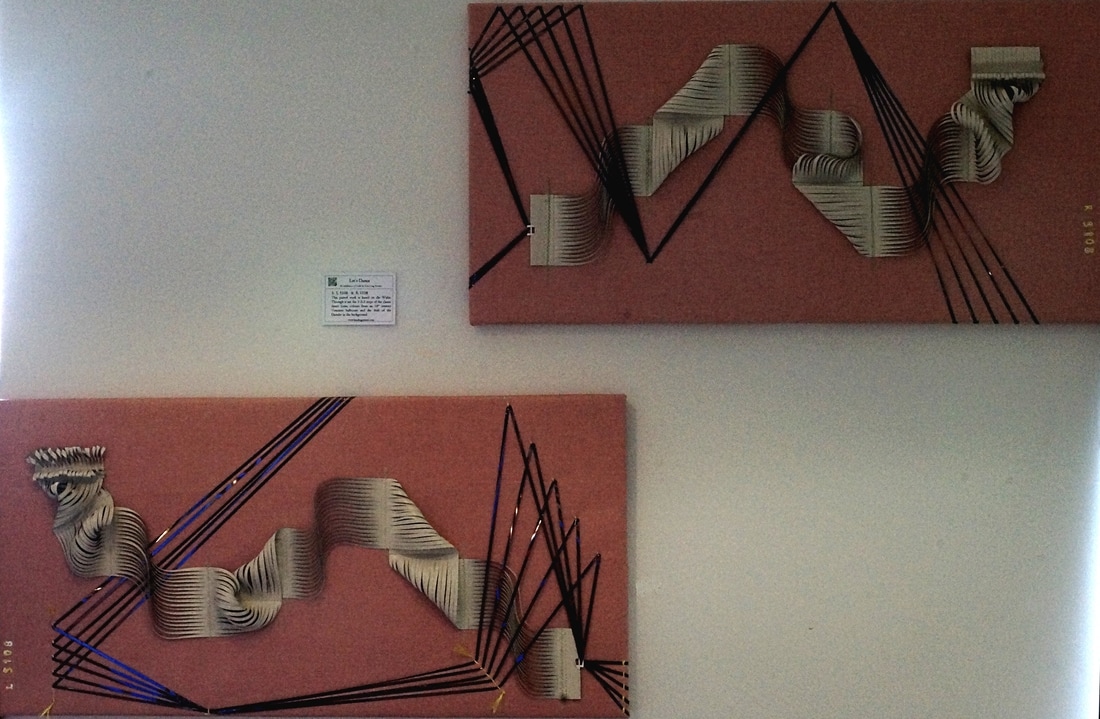
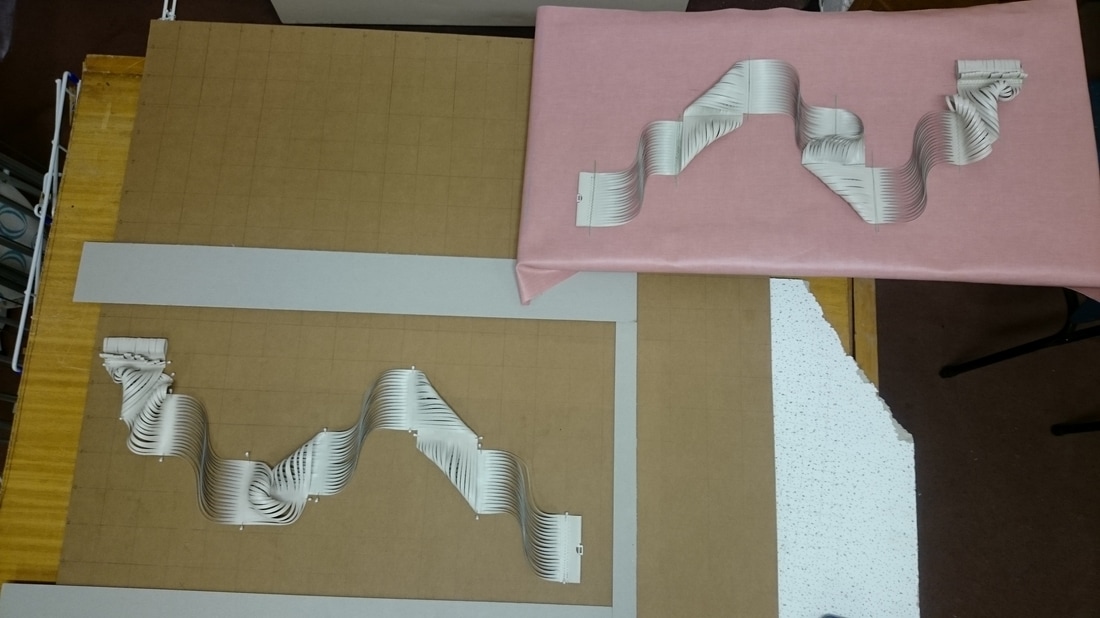
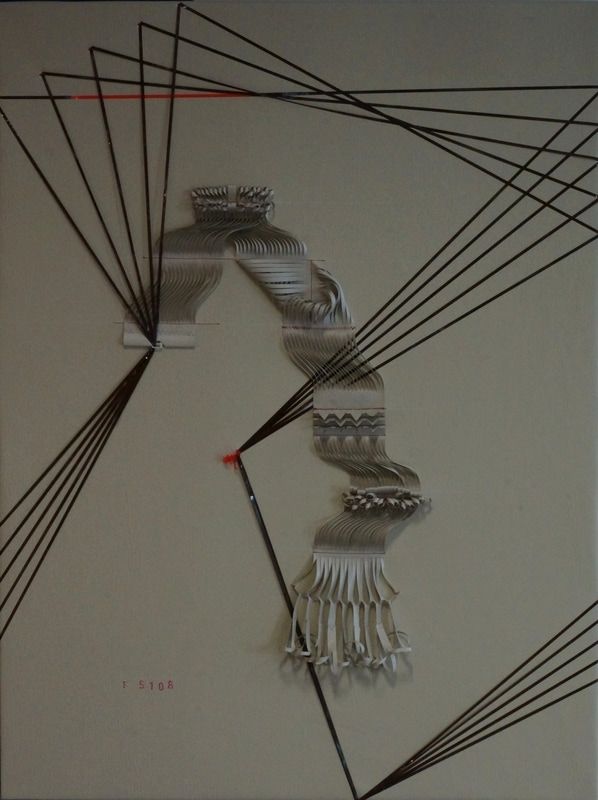
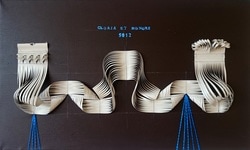

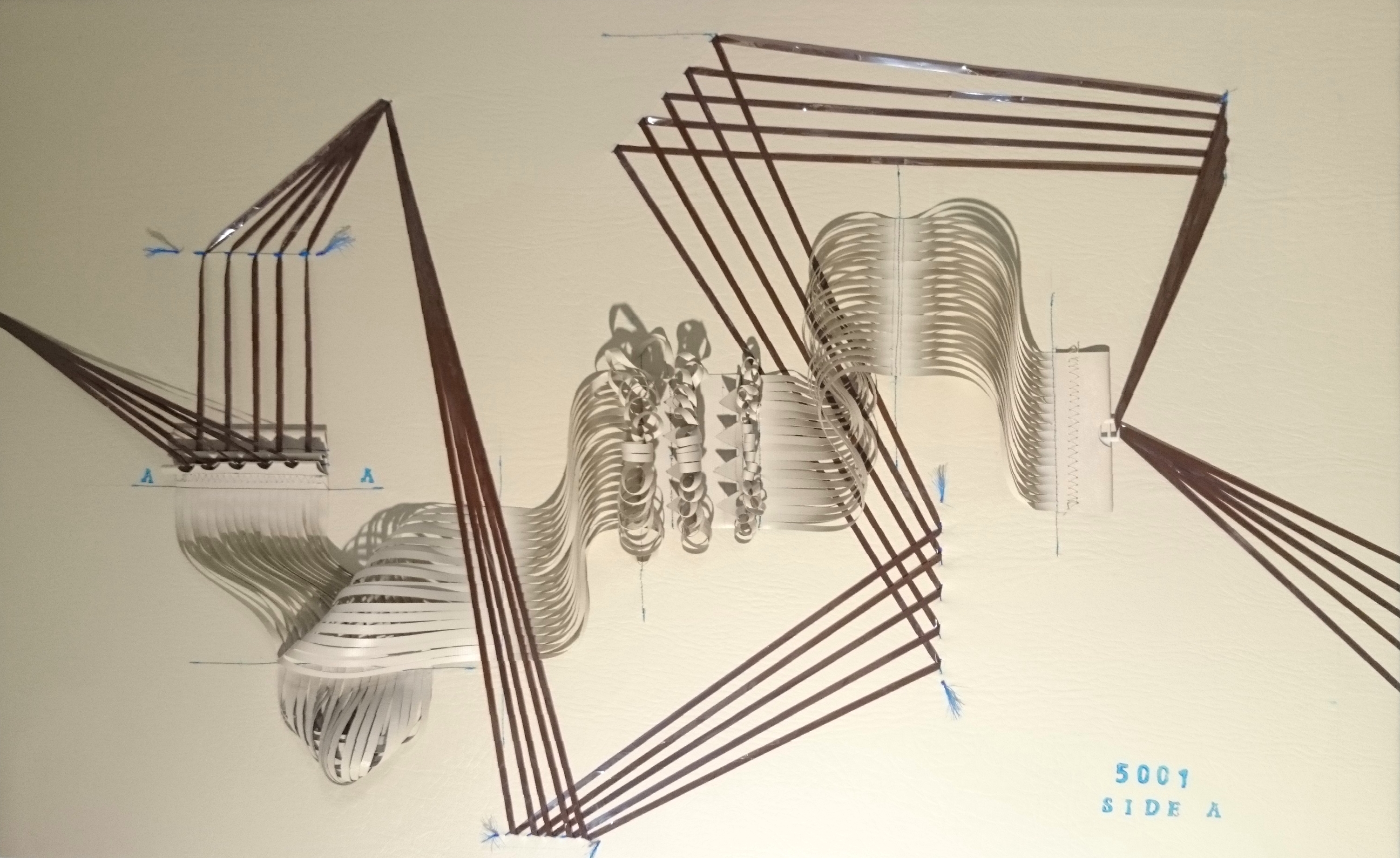
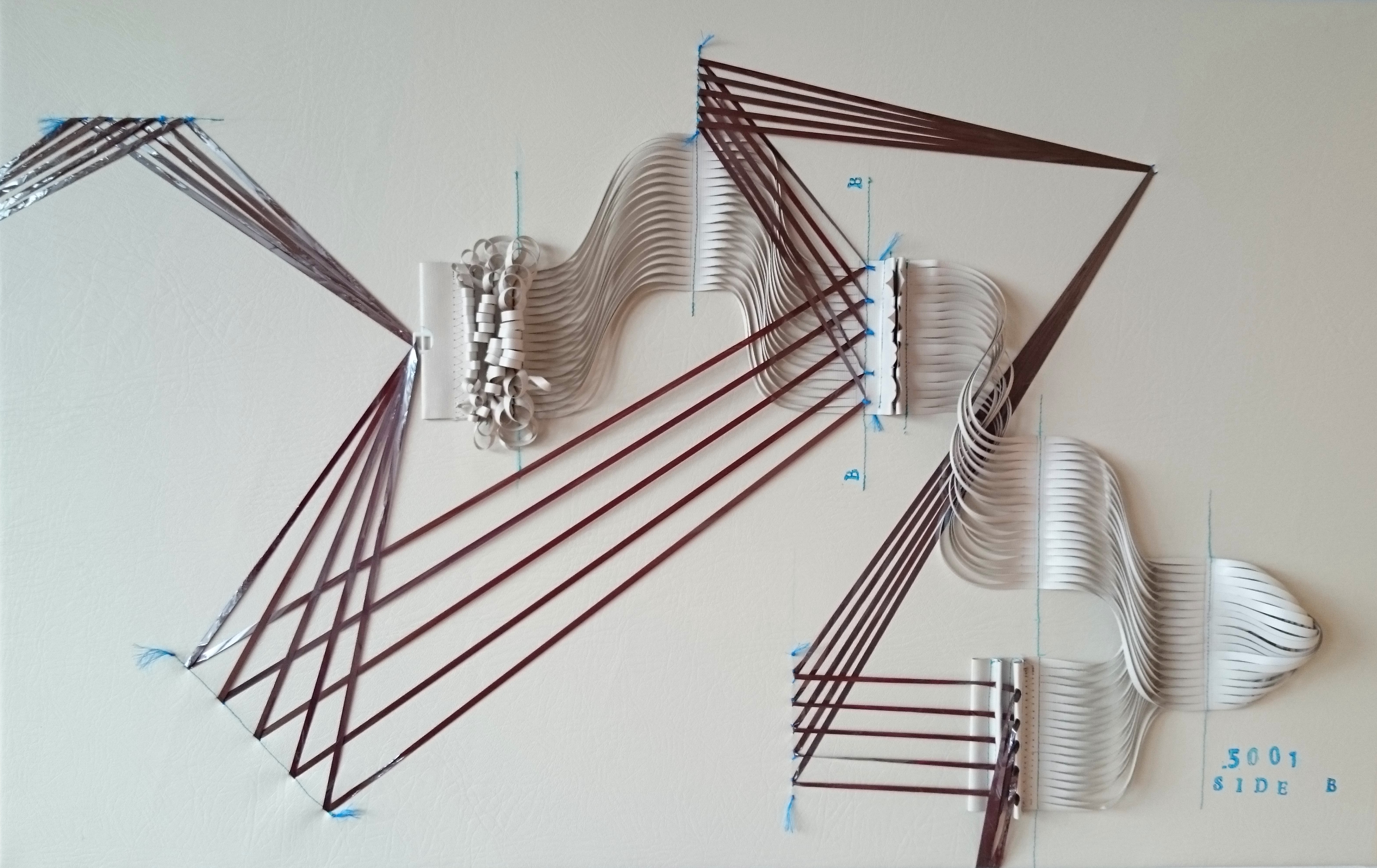
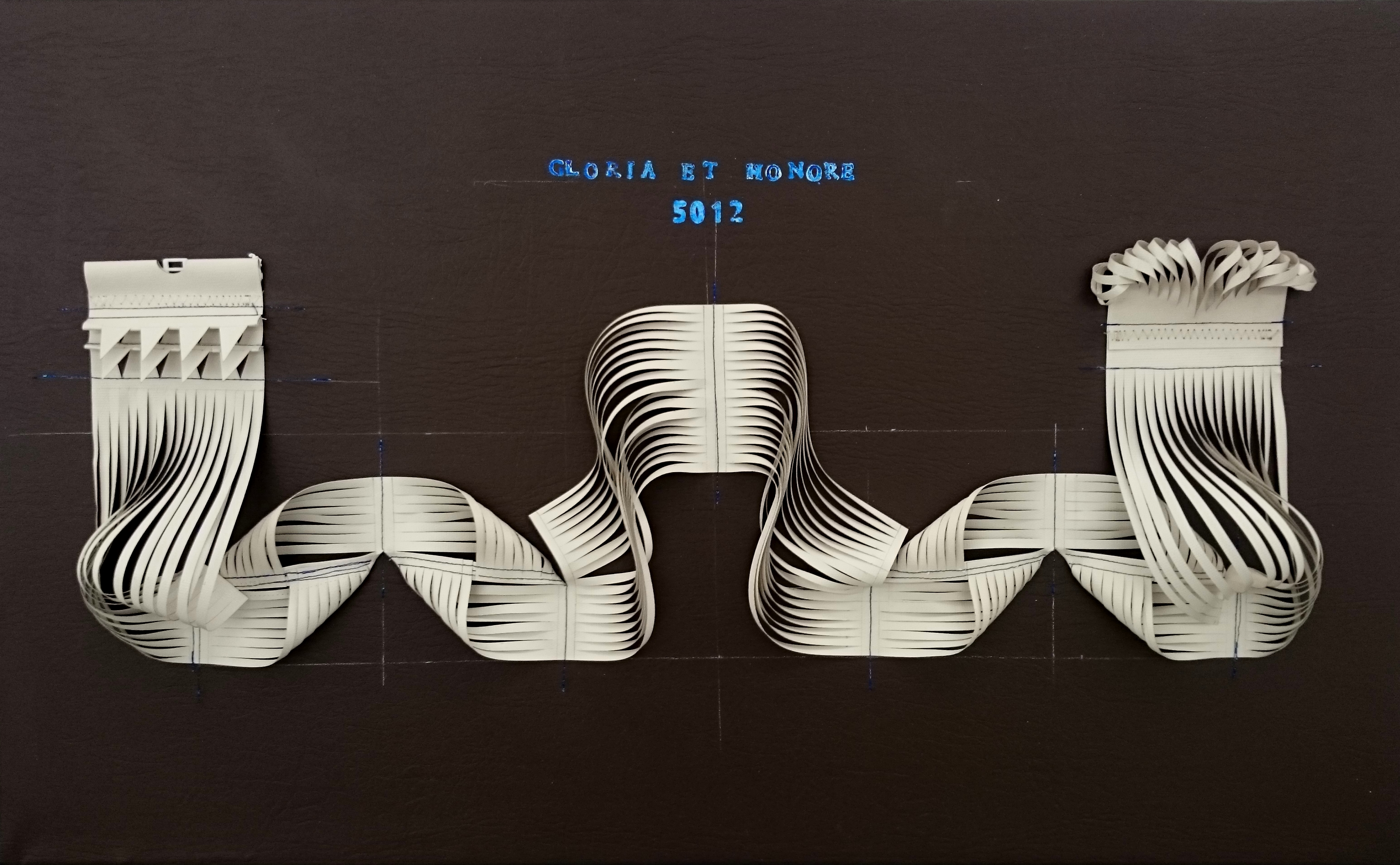
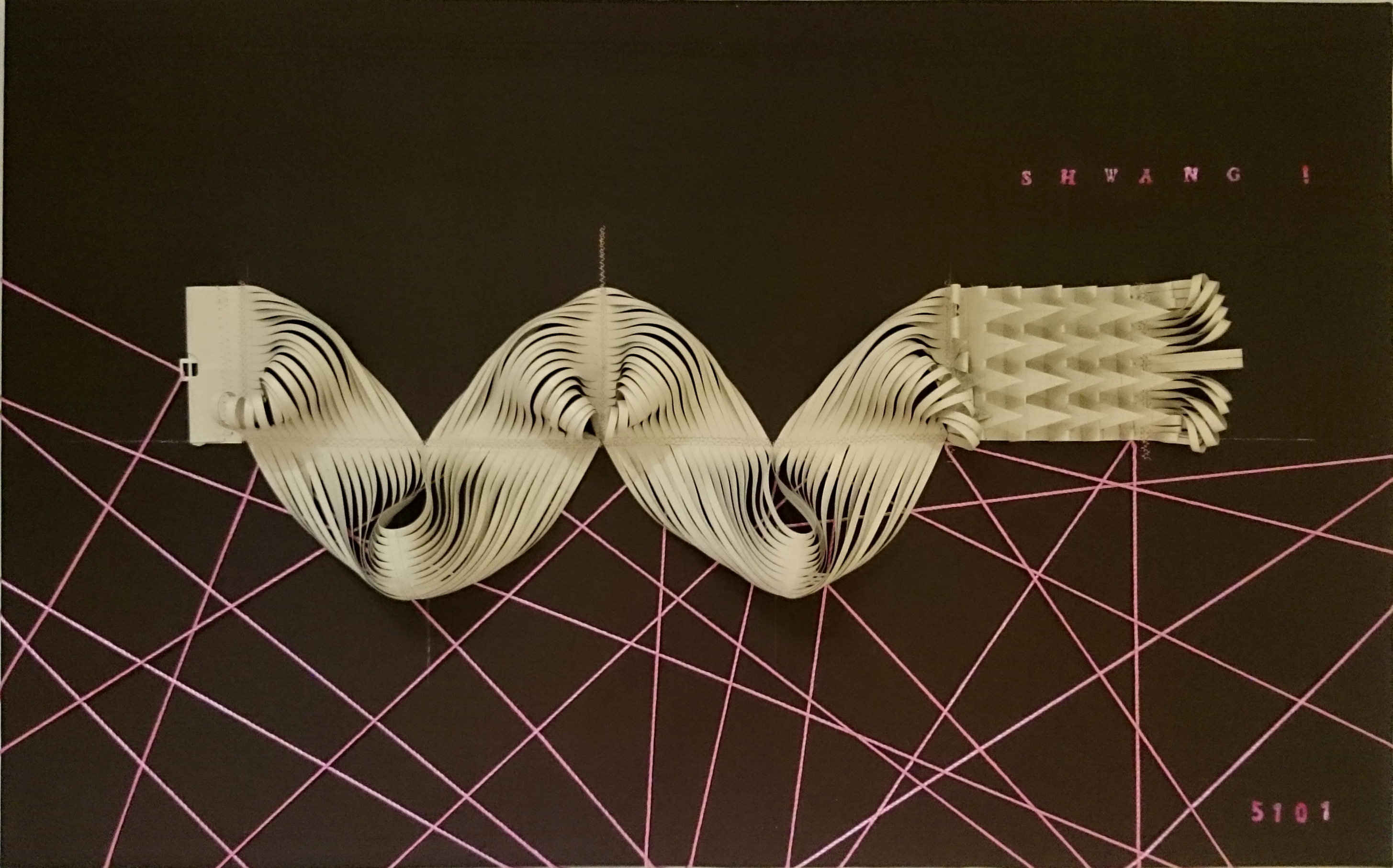
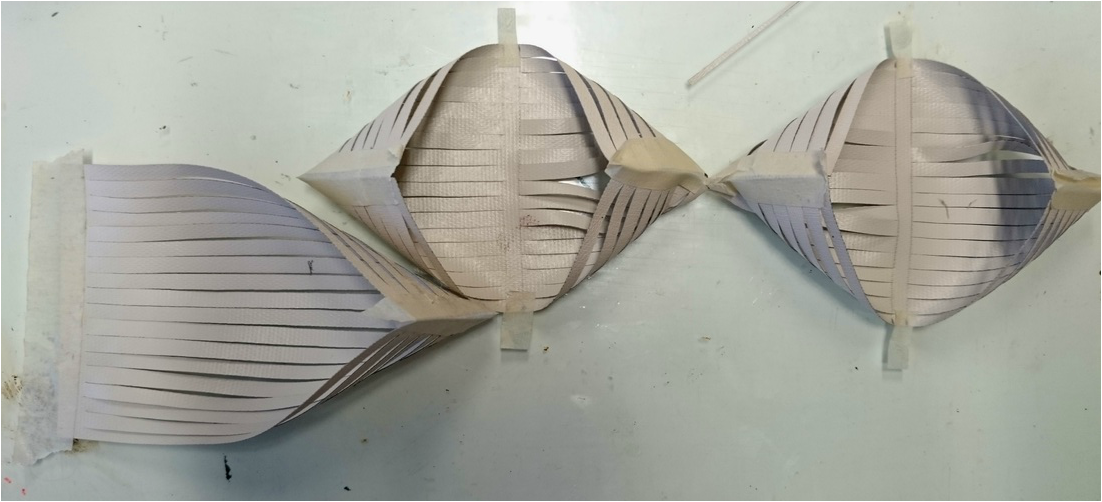
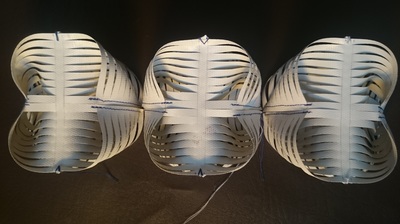
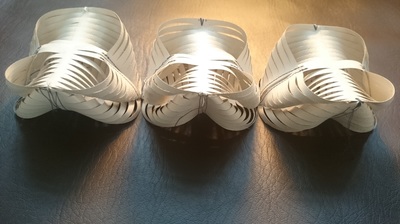
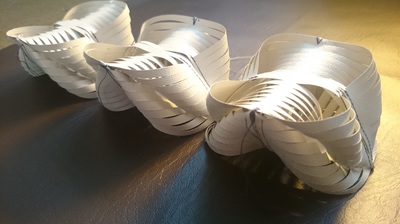
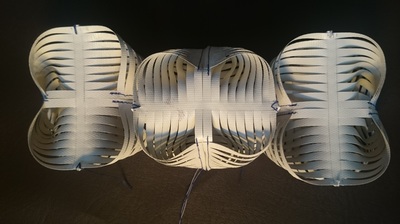
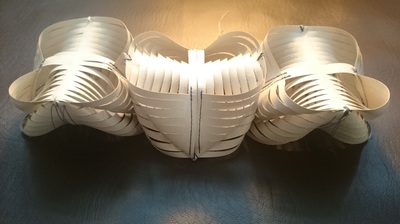
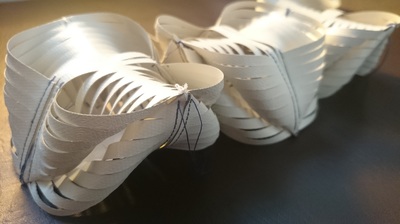
 RSS Feed
RSS Feed
